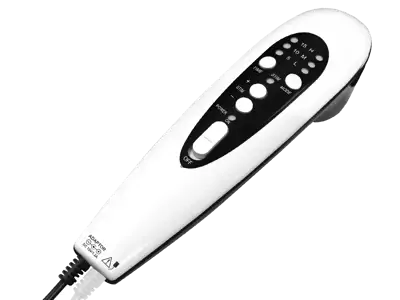Tendonitis
Manual, strenuous physical work causes tendonitis, which causes a lot of pain in the wrist when the hand is moved. A "crackling" sensation is felt above the tendon.
Read more...Cleaning the house, pushing a mobile phone, prolonged computer use, scrubbing floors.
A part of the muscles that attach the muscle to the surface of the bones are continuous tendons. They bridge joints and thus play an important role in movement. The tendons run in a tunnel-like sheath, the tendon sheath, which, by means of the tendons' cords, make the movement of the tendons easier and frictionless.
Tendonitis is an inflammation of these "sheaths" for some reason, most often from physical overstrain. The result is pain on movement.
Types of tendonitis
Tendonitis can be fibrinous or purulent.
- Fibrinous tendinitis typically affects people who work on one side of the body (typists, cashiers, pianists, etc.); it is triggered by long periods of monotonous movement, which causes the tendon sheath to become inflamed and swollen, and the composition of the substance that helps it to glide changes. This problem is most common in the finger tendons (on the back of the hand); it is characterised by severe pain when the fingers are moved, the hand becomes clumsy, the affected area becomes sensitive to pressure, warm to the touch and swollen. When we move our fingers, we feel a snowy, crusty rubbing sensation over the tendon sheath.
- Purulent tendonitis is the result of an infection, such as a thorn, thorn or needle stick. The symptoms appear rapidly, there is spontaneous pain and tenderness, and the swelling may spread to the adjacent fingers and the back of the hand; pus tendonitis may even be accompanied by high fever and chills. It is important to distinguish it from fibrinous inflammation, because in the case of purulent inflammation, complete healing and preservation of finger function can only be ensured if medical treatment is started in time!
Treatment options for tendonitis
If you suspect tendonitis, see your doctor. If the condition is not due to purulent inflammation, you can treat it at home.
There are several ways to treat tendonitis at home.
- Rest your wrist, relax it and cool it. (E.g. Thermedic Wrist Device)
- Topical application of anti-inflammatory creams
- Although oral anti-inflammatory medications can be taken, they have little effect as they can only reach the site of inflammation in a very small amount (after the stomach, digestive organs and liver, few of the active ingredients reach the tendon sheath where they are needed to have an effect).In large amounts, you can expect some unpleasant side effects.
Physical therapy tools for symptomatic management:
- TENS and Microcurrent Nerve Stimulation treatments can be used to relieve pain caused by inflammation without drugs or side effects.
- High-frequency pulsed magnetotherapy provides support in the treatment of lesions of soft tissues (muscle, joint, tendon, ligaments). Magnetotherapy is part of medical physiotherapy, which helps in the healing of musculoskeletal disorders.
- Ultrasound therapy absorbs mechanical vibrations in the tissues, accelerating blood circulation to the treated area, which stimulates the healing process. After 10 to 15 treatments, a break of a few months is necessary.
- Soft laser treatment quickly reduces pain, reduces inflammation and speeds up the healing process.

















